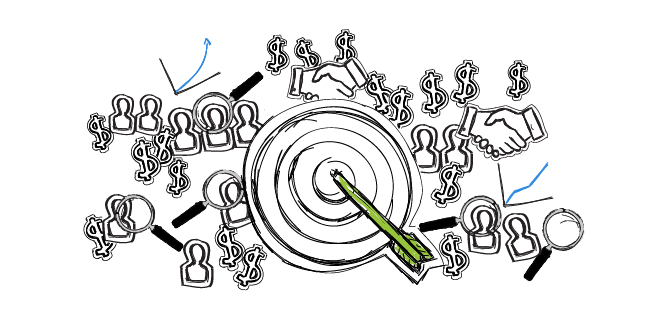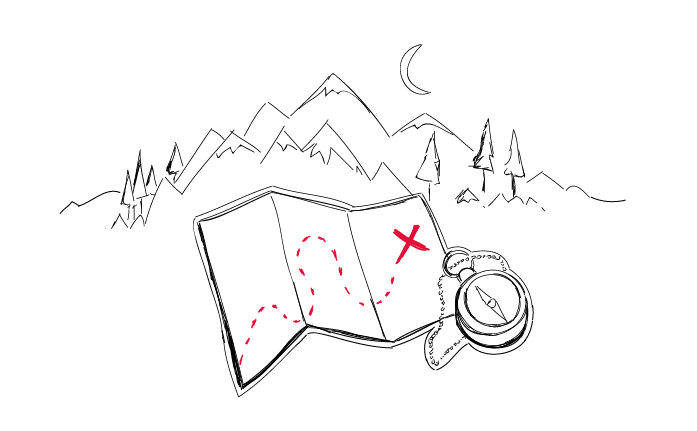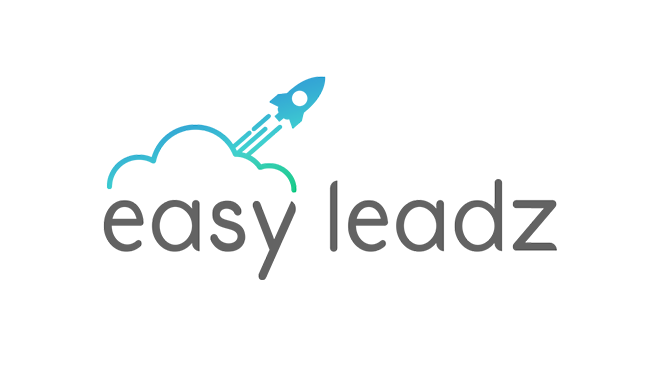Master the art of targeting and you’re bound to unleash the full potential of your cold email campaigns. Here are 4 good reasons why targeting should become your core practice for cold emailing, because it influences everything from locating customers to crafting personalized messages that engage and convert.
This is a guest post by Piotr Zaniewicz, CEO @RightHello. If I was to create a list of experts on lead generation, or B2B outbound sales process, Piotr and his team would definitely be in top positions. If you’re not sure what targeting is and why you need it for your cold email campaign, make sure you don’t skip this one.
***
You don’t want to launch a cold email campaign if you aren’t 100% sure that every single component works. Whether it’s a sophisticated messaging tool or killer copy, you’ll need to pay an equal amount of attention to all of them. But there’s one component that can either make or break your cold email campaign right from the start – targeting.
Good targeting is key to building a foundation for effective cold email outreach. Some companies never realize the importance of targeting and generate leads that aren’t qualified, or worse, deal with a complete lack of leads.
Those that take extra care to build an efficient targeting process, in consequence engage the right customer groups that provide a solid level of conversion.
It should be clear by now that sending messages to random professionals and companies won’t bring you any closer to reaching your business goals. To make it in B2B sales, you’ll need to take all necessary effort to build mutually beneficial business relationships with clients – and targeting is the first step to achieving it.
So, why is targeting worth your attention?
Targeting is not exclusive to cold emailing – in fact, it’s the first step in any marketing campaign. Have a look at these 4 reasons to see why cold email outreach campaigns can’t work without a strong foundation in targeting.
1. It helps you locate potential customers
Narrowing down your target helps – the smaller your target groups, the easier it will be to find your customers. Many marketers cringe at the thought of prospecting – without prospecting software, it becomes a tedious and time-consuming process. It takes a lot of time to google keywords that match your potential customer groups or prospect on Linkedin.
A good target groups contains upwards of 5.000 companies around the world. This means that weekly you’ll be mining data about at least a 100 companies to keep the campaign going and benefit from the compounding effect of introduction emails and follow-ups.
That’s why there’s a lot of benefit in using software solutions available on the market to generate up-to-date contact data of companies that match your ideal customer criteria. Approaching several companies operating from the same location, you can bet that word will get around.
This makes room for network effect to happen on a smaller scale. This means that new clients will, in theory, deliver 1+x referral leads once you do a great job for them. It’s very hard to achieve on a global scale, that’s why you want to start small.
2. It helps you write emails that convert
Without knowing the similarities that connect the people and companies you’re approaching, you stand no chance at creating email content that engages or converts. Targeting helps to save time because from the start you’ll be looking for professionals that share job specifics and pain-points. Once you do your research, you can unashamedly approach cold prospects with slightly customized messages based on the same template.
As long as you’re relevant and nail the voice, tone and pain points that resonate with your target group then your emails won’t be spammy. Targeting is the most crucial practice for better personalization of your emails.
3. Targeting is the first step to email outreach automation
If you want to engage cold prospects all over the planet, expect sending hundreds of emails every week to become challenging quickly. Just think about addressing customers living in different time zones and you’re bound to realize that targeting is a stress-saving solution.
Narrowing down your target group to a single region you can easily automate the process, ensuring that your messages reach customers at the right moment – definitely not when they’re asleep or just out of work and dying to get home.
4. It makes room for efficient lead qualification and sales
Once your cold emails start to generate responses, the first priority is to qualify these leads. But how to do that and keep the conversation engaging? Consumer insight!
Targeting will help you interpret “yes” and “no” signals and better recognise patterns in customer buying behaviour. Analyze reasons customers give you for buying or not buying your solution, and you’ll access a host of valuable insights to make your sales process quicker and more effective.
A good target is how you make sure that your sales team gets only pre-qualified, quality leads that won’t be a waste of time to chase.
Now you see why good targeting is the foundation of any effective cold email outreach.
Are you trying to define a good target group and aren’t sure how to do it? Read my latest article – “How to get leads? Supercharge sales with a proven targeting process”.
Target, but know when enough is enough
Narrowing down your target group is a proven path to learning more about client needs and creating truly personalized messaging to improve conversion from leads to paying customers.
Don’t go overboard, if your target becomes too specific then you’ll find that you can only address a number of companies around the world that perfectly match your criteria. If your target really is a niche like that – there’s no point in organising a cold email campaign, you’d just approach each of them personally.
Your target group has potential for cold mailing if it contains more than 5,000 companies worldwide. Focus on this group and you’ll be on your way to improving your cold emailing performance and engaging more potential customers in meaningful conversations.
Guest post by Piotr Zaniewicz, CEO @RightHello.
FAQ
How does cold email outreach differ from cold calling in reaching a target audience?
Cold email outreach differs from cold calling in that it allows for sending personalized email messages directly to the target audience’s inbox, offering a less intrusive and more detailed approach. It enables recipients to respond at their convenience, unlike the immediate response required in cold calling.
What are the key components of a successful cold email outreach campaign?
The key components of a successful cold email outreach campaign include a compelling subject line, a personalized email message that resonates with the recipient’s needs or job title, a clear call to action, and a professional email signature. It’s also important to ensure the correct email address is used and to follow up appropriately.
How can I create effective subject lines for cold emails to avoid the spam folder?
To create effective subject lines for cold emails that avoid the spam folder, keep them concise, relevant, and free from spam-triggering words. Personalizing the subject line to the recipient’s interests or industry can also increase the chances of your message being noticed.
What should be included in the email body of a cold email outreach?
The email body of a cold email outreach should include a brief introduction, an explanation of your product or service, how it relates to the recipient’s needs or pain points, and a compelling call to action. It’s important to keep the content concise and engaging.
Can the CAN-SPAM Act affect cold email outreach campaigns?
Yes, the CAN-SPAM Act affects cold email outreach campaigns as it sets rules for commercial email messages, including requirements for clear identification of the sender, an opt-out mechanism, and accurate subject lines. Non-compliance can lead to penalties.
What are some effective cold email outreach templates?
Effective cold email outreach templates typically start with a personalized introduction, highlight a value proposition or offer relevant to the recipient, and end with a clear call to action. They should be adaptable to different target audiences and goals.
How many follow-up emails should be included in a cold email outreach strategy?
In a cold email outreach strategy, it’s generally recommended to include 2-3 follow-up emails spaced a few days apart. This ensures persistence in your outreach efforts without overwhelming the recipient.
What role does a professional email signature play in cold email outreach?
A professional email signature in cold email outreach plays a role in establishing credibility and providing additional contact details. It can include your name, position, company, and contact information, making it easier for recipients to verify your identity and respond.
How can blog posts be integrated into cold email outreach?
Blog posts can be integrated into cold email outreach by including links to relevant articles that provide valuable insights or further information about your product or service. This can add value to your email and position you as a knowledgeable resource in your field.
What are the goals of cold email outreach for sales teams?
The goals of cold email outreach for sales teams typically include generating leads, building brand awareness, establishing relationships with potential customers, and ultimately driving sales. It’s a strategic approach to reach out to prospects who may be interested in what the company offers.
How does cold email outreach help in achieving successful cold outreach?
Cold email outreach helps in achieving successful cold outreach by allowing sales teams to directly reach their target audience with personalized messages. It’s an effective way to introduce a cold email pitch, gauge interest, and nurture leads through follow-up messages.
READ ALSO

Account Based Sales Development 101: What Is It? How Does It Work?
If you're doing outbound sales, you've probably heard about the ABSD (Account Based Sales Development) trend lately. Is it new? Is it for everyone? Is it a revolutionary approach that will bring you $$$ as soon as your sales team adopts it? What is it, really? Check out the short introduction to ABSD in simple words.

Step-by-Step Practical Guide to a Cold Email Campaign That Gets Delivered
Sending an automated cold email campaign is just a start. In the end, you want your emails to actually get to your prospects' inboxes. And to make that happen, it's crucial that you properly plan and set up your cold email campaign in every detail. I wrote this post in cooperation with our Support team and our Head of Integration & Deliverability, because we observed that many of our users still need help when it comes to properly adjusting their cold email campaign settings.

What is Data-as-a-Service And Why Would You Use It? Interview with EasyLeadz
Usually, I reach out to prospect list building tools like Hunter, LeadFuze or UpLead to review them for our Prospect List Building Series which has become a regular segment on our blog. As a side note, Hunter was our 14th installment. But when I found EasyLeadz, I thought it would be a nice addition to our "prospect list building" family. They're not a tool. Actually, they changed their business models to offer "Data-as-a-service". I was intrigued enough to ask Tushar Jawa from EasyLeadz for an interview and here it is. Let's go.
